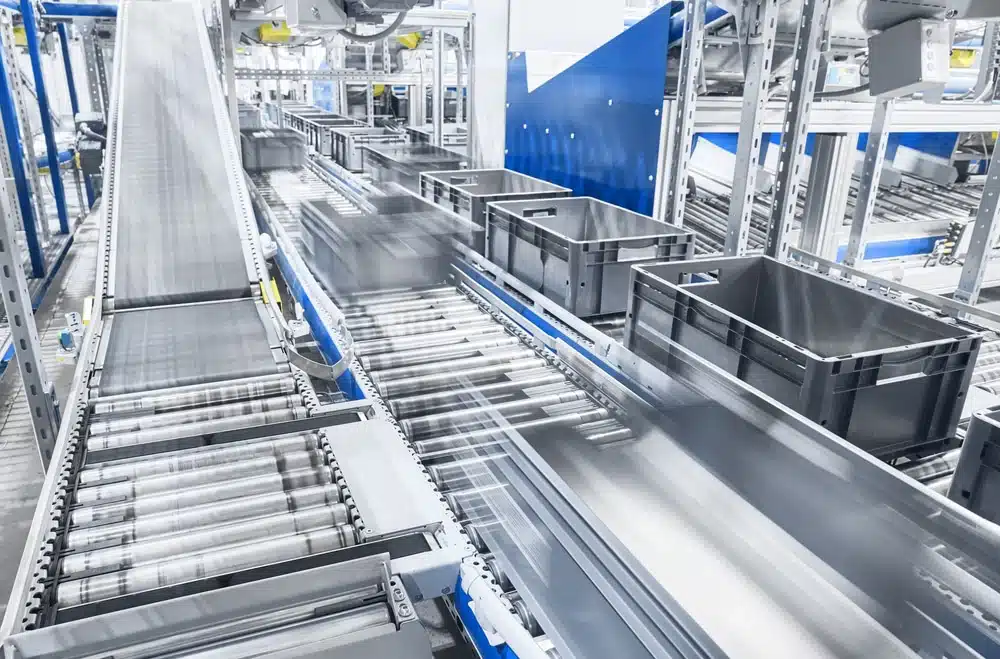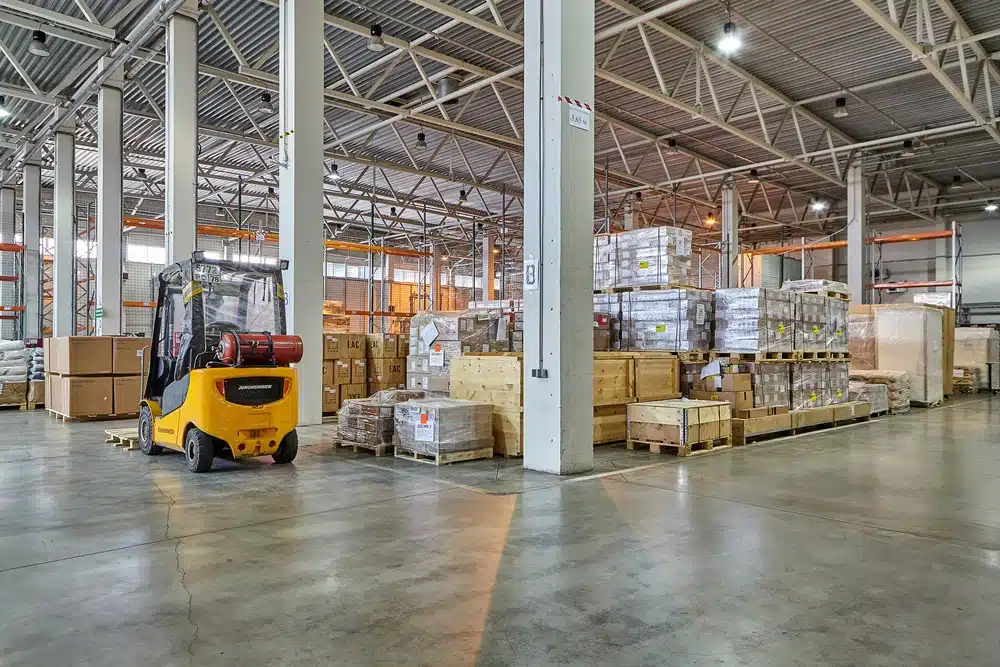
In the demanding world of logistics and supply chain management, the efficiency of your shipping and receiving process workflow is not just a part of operations; it determines your level of success. For professionals in the warehouse industry, understanding and optimizing these processes are crucial for staying competitive and meeting the evolving demands of the market.
This guide is designed to provide you with practical, actionable insights into enhancing your shipping and receiving operations. We’ll delve into each element of the workflow, offering strategies and solutions to streamline your practices, reduce bottlenecks, and improve overall efficiency. Join us as we cover how to transform your shipping and receiving processes into a well-oiled machine, capable of handling the challenges of today’s fast-paced business environment.
E-commerce Order Fulfillment: Trends and Best Practices
Adapting to the Rapid Pace of E-commerce
In the dynamic environment of warehouse management, adapting to the rapid pace of e-commerce is crucial. The shift towards online shopping has not only accelerated the demand for quicker fulfillment but also raised the bar for accuracy and reliability. Excelling in e-commerce order fulfillment is about more than meeting customer expectations; it’s about creating a seamless, efficient process that enhances your operational workflow. Here, we explore the key trends and best practices that are shaping the future of e-commerce fulfillment.
Understanding E-commerce Fulfillment Challenges
- Diverse Order Profiles: E-commerce orders can vary significantly in size, frequency, and complexity. This diversity requires a flexible approach to order processing, where your workflow can adapt to different types of orders efficiently.
- Customer Expectations for Speed and Accuracy: Today’s consumers expect not just fast delivery but also precise order fulfillment. Any errors in order processing can lead to customer dissatisfaction and increased returns.
- Scalability for Peak Seasons: E-commerce businesses often experience significant fluctuations in order volume, especially during peak seasons. Your fulfillment process must be scalable to handle these surges without compromising on efficiency or accuracy.
Strategies for Optimizing E-commerce Fulfillment
Automated Order Processing: Automation is key in modern e-commerce fulfillment. Implement systems that can automatically capture, process, and route orders. This reduces the need for manual data entry, minimizes errors, and speeds up the entire fulfillment process.
Efficient Picking and Packing Strategies:
Zone Picking: Divide your warehouse into zones and assign pickers to specific areas. This reduces travel time and increases picking efficiency.
Batch Picking: Group similar orders and pick them in a single pass. This is particularly effective for smaller orders and can significantly reduce the time spent on picking.
Scanning Technology: Implement barcode RF scanning or augmented reality to pick-by-vision, pick-by-voice, pick-by-label, or pick-by-light for faster and more accurate picking.
Real-Time Inventory Management:
Dynamic Stock Updates: Utilize a system that provides real-time updates on inventory levels. This ensures that your stock levels are always accurate, reducing the chances of overselling.
Integration with Suppliers: Establish a direct link with your suppliers for real-time inventory replenishment. This can help maintain optimal inventory levels and reduce stockouts.
Leveraging Data Analytics: Use data analytics to gain insights into order patterns, inventory turnover, and customer preferences. This information can help you optimize your inventory, predict demand more accurately, and make informed decisions about stock replenishment.

Mastering the Receiving Process
Setting the Stage for Operational Success
The receiving process is a pivotal component of your shipping and receiving workflow. It’s where the efficiency of your entire warehouse operation begins. A well-managed receiving process not only ensures accuracy in inventory but also sets the stage for successful order fulfillment. In this section, we delve into strategies to enhance the receiving process, emphasizing how these improvements directly impact your overall warehouse efficiency.
Streamlining the Receiving Workflow
Systematic Approach to Receiving: Develop a structured process for receiving goods. This includes scheduled receiving times to avoid congestion and a clear protocol for handling and sorting incoming shipments.
Rigorous Inspection and Verification: Implement thorough inspection procedures upon receipt of goods. This step is crucial for verifying order accuracy and identifying any damages or discrepancies early in the process.
Efficient Documentation and Data Entry: Utilize technology for immediate and accurate documentation of received goods. Automated data entry systems can significantly reduce manual errors and speed up the process.
Organizing for Receiving Efficiency
Strategic Warehouse Layout: Design your warehouse layout to facilitate efficient receiving. Ensure that there is ample space for unloading and sorting goods, and that new inventory is easily accessible for storage or immediate fulfillment.
Effective Use of Technology: Implement a warehouse management system (WMS) like Logimax, which can streamline various aspects of the receiving process. Features such as barcode scanning, automated data entry, and real-time inventory updates can transform this initial stage into a highly efficient operation.
Training and Empowering Staff: Ensure your team is well-trained in your receiving processes and the technology used. A knowledgeable team can significantly enhance the efficiency and accuracy of the receiving process.
The Impact on Overall Workflow
Optimizing the receiving process is essential for maintaining the integrity of your entire shipping and receiving workflow. By ensuring accuracy and efficiency at this initial stage, you set a strong foundation for the subsequent steps in your operations, leading to smoother transitions, reduced errors, and improved overall workflow management.

Innovations in Inventory Management
Enhancing Efficiency in the Shipping and Receiving Workflow
Effective inventory management is a critical element in streamlining your shipping and receiving process. It’s not just about keeping track of what’s in stock; it’s about having the right products available at the right time, and in the right quantities. This section explores innovative strategies and technological solutions that can significantly improve your inventory management, thereby enhancing the overall efficiency of your shipping and receiving operations.
Advanced Techniques for Inventory Accuracy
Real-Time Inventory Tracking: Implement systems that provide live updates on inventory levels. This real-time tracking is essential for maintaining accurate stock information, crucial for efficient order processing, and minimizing delays in the shipping and receiving workflow.
Automated Replenishment Systems: Utilize automated systems that trigger replenishment orders based on predefined inventory thresholds. This proactive approach ensures that you are never out of stock of key items, maintaining continuous flow in your shipping and receiving process.
Data-Driven Inventory Forecasting: Employ advanced analytics to forecast future inventory needs based on historical sales data, trends, and seasonal fluctuations. Accurate forecasting helps in optimizing inventory levels, reducing the risk of overstocking or stockouts, and ensuring smooth operations in your shipping and receiving workflow.
Leveraging Technology for Enhanced Inventory Management
Integration of Warehouse Management Systems (WMS): A robust WMS, like Logimax, can be a game-changer for your inventory management. Such systems offer features like barcode scanning, automated inventory updates, and detailed reporting, which are instrumental in enhancing the accuracy and efficiency of your Inventory Management.
RFID and Barcode Technology: Implementing RFID tags and barcode technology can streamline the tracking and management of inventory. This technology speeds up the process of locating items within the warehouse, crucial for timely and efficient shipping and receiving operations.
Cloud-Based Inventory Solutions: Consider cloud-based inventory management solutions for greater flexibility and accessibility. These systems allow for real-time inventory tracking and management from anywhere, providing greater control over your shipping and receiving process.
The Role of Inventory Management in Workflow Optimization
Effective inventory management plays a pivotal role in optimizing your shipping and receiving workflow. By ensuring that you have accurate, real-time data on your inventory, you can make informed decisions, reduce delays, and maintain a steady flow of goods through your warehouse. This not only improves operational efficiency but also enhances customer satisfaction by ensuring timely order fulfillment.

Leveraging Technology for Shipping and Receiving Efficiency
Integrating Advanced Solutions for Streamlined Operations
In the fast-evolving landscape of warehouse management, technology plays a pivotal role in enhancing the efficiency and accuracy of shipping and receiving processes. From automated systems to real-time tracking, technological innovations are transforming traditional workflows into more efficient, error-proof operations. This section highlights how leveraging technology can significantly improve your shipping and receiving process workflow.
Incorporating Automation in Shipping and Receiving
Automated Sorting and Labeling Systems: Implement automated sorting systems that can quickly organize goods based on destination, size, or other criteria. Automated labeling systems can also speed up the process by generating and applying labels accurately and swiftly.
Conveyor Belts and Robotic Assistance: Utilize conveyor belts for efficient movement of goods within the warehouse. Robotic assistance can also be employed for tasks like palletizing and depalletizing, reducing manual labor and increasing throughput.
Automated Shipping Software: Software that automates the creation of shipping documentation, carrier selection, and tracking can drastically reduce the time spent on manual data entry and increase the accuracy of shipments.
Real-Time Data and Analytics for Decision Making
GPS Tracking and RFID Technology: Implement GPS tracking for real-time location updates of shipments. RFID technology can also be used for instant inventory tracking and management, ensuring a smooth flow in the shipping and receiving process.
Data Analytics for Process Optimization: Use data analytics tools to analyze shipping and receiving patterns, identify bottlenecks, and optimize processes. This data-driven approach can lead to significant improvements in workflow efficiency.
Integration with E-commerce Platforms and ERP Systems: Ensure your technology solutions integrate seamlessly with e-commerce platforms and ERP systems. This integration provides a unified view of operations, enhancing coordination and efficiency in the shipping and receiving process.
Enhancing Communication and Visibility
Mobile Applications for Real-Time Updates: Utilize mobile applications that provide staff with real-time updates on shipping and receiving tasks. This enhances communication and coordination among team members.
Cloud-Based Platforms for Accessibility: Adopt cloud-based platforms that offer accessibility from any location. This enables better visibility and control over the shipping and receiving process, facilitating quick decision-making and response to changes.
The Impact of Technology on Workflow Efficiency
The integration of technology into your shipping and receiving process workflow is not just about adopting new tools; it’s about transforming your operations to be more agile, accurate, and efficient. By leveraging these technological solutions, you can significantly reduce manual labor, minimize errors, and streamline your entire shipping and receiving process, leading to improved operational efficiency and customer satisfaction.

Customized Shipping Solutions: Adapting to Diverse Needs
Tailoring Shipping Processes for Enhanced Flexibility and Efficiency
In the diverse world of warehouse management, one size does not fit all, especially when it comes to shipping solutions. Different products, customers, and markets demand tailored shipping approaches. Customizing your shipping solutions is key to enhancing the efficiency and effectiveness of your shipping and receiving process workflow. This section explores how adapting your shipping strategies to various needs can significantly improve your operational performance.
Identifying the Need for Customization
Diverse Product Requirements: Different products may require unique shipping conditions, such as temperature control or special handling. Recognizing these specific needs is crucial for ensuring product integrity and customer satisfaction.
Varied Customer Expectations: Different customers and markets might have unique shipping preferences or requirements. Tailoring your shipping solutions to meet these expectations can enhance customer loyalty and open up new market opportunities.
Operational Scalability: Your shipping process should be scalable to handle fluctuations in order volume, especially during peak seasons or promotional periods. Customized solutions can help manage these variations efficiently.
Implementing Customized Shipping Strategies
Multi-Carrier Shipping Solutions: Utilize shipping software that supports multiple carriers, allowing you to choose the most cost-effective or fastest shipping option based on the specific requirements of each order.
Automated Shipping Rules: Implement automated rules in your shipping software to select the best shipping method based on factors like destination, weight, or order value. This automation ensures efficiency and accuracy in your shipping decisions.
Packaging Customization: Tailor your packaging strategy to suit different products. This might include using specialized packaging materials or customizing package sizes to reduce shipping costs and minimize waste.
Leveraging Technology for Customized Shipping
Integration with Warehouse Management Systems: Ensure your shipping solutions are integrated with your WMS, like Logimax. This integration allows for seamless coordination between inventory management and shipping processes, enabling more efficient and customized shipping operations.
Real-Time Shipping Analytics: Employ analytics tools to monitor shipping performance and identify trends. This data can help you refine your shipping strategies, ensuring they are aligned with operational goals and customer needs.
Customer-Focused Shipping Portals: Implement customer-facing shipping portals that offer tracking information and delivery options. This level of transparency and control enhances the customer experience and supports customized service delivery.
The Benefits of Customized Shipping in Your Workflow
Customizing your shipping solutions is not just about meeting diverse requirements; it’s about optimizing your entire shipping and receiving process workflow. By tailoring your shipping strategies, you can achieve greater efficiency, reduce costs, and enhance customer satisfaction. This level of customization ensures that your shipping operations are not only effective but also agile enough to adapt to changing market demands and business growth.

Understanding and Utilizing Dunnage in Shipping
Ensuring Product Safety and Efficiency in Transit
Dunnage plays a crucial role in the shipping process, particularly in ensuring the safety and integrity of products during transit. Proper use and management of dunnage can significantly impact the effectiveness of your shipping and receiving workflow. This section delves into the importance of dunnage in shipping, offering insights into how effective dunnage management contributes to the efficiency and reliability of your shipping processes.
The Importance of Dunnage in Shipping
Protection and Stability: Dunnage provides necessary cushioning and support for goods during transit, protecting them from damage caused by movement, vibration, or impact. This is especially important for fragile or sensitive items.
Maximizing Space Utilization: Effective dunnage use helps in maximizing space within shipping containers or trucks, allowing for more efficient loading and reducing shipping costs.
Compliance with Shipping Regulations: Proper dunnage usage ensures compliance with shipping and transportation regulations, which can vary depending on the nature of the goods and the mode of transport.
Best Practices for Dunnage Management
Selecting Appropriate Dunnage Materials: Choose dunnage materials that best suit the type of goods being shipped. Options include air pillows, foam inserts, bubble wrap, kraft paper, and more. Consider factors like weight, durability, and recyclability when selecting dunnage.
Training Staff on Proper Dunnage Use: Ensure your team is well-trained in the proper use and placement of dunnage. Correct usage not only protects the goods but also contributes to the overall efficiency of the packing and shipping process.
Regular Evaluation and Optimization: Continuously evaluate the effectiveness of your dunnage materials and practices. Look for opportunities to optimize usage, such as reducing material waste or exploring more sustainable options.
Leveraging Technology for Effective Dunnage Management
Integration with Warehouse Management Systems: Utilize a warehouse management system like Logimax to track and manage dunnage materials. This integration can help in maintaining adequate supplies of dunnage and streamlining its usage in the packing process.
Automated Packing Solutions: Consider automated packing systems that can efficiently and accurately determine the optimal type and amount of dunnage for each package, enhancing both product safety and packing efficiency.
Data-Driven Decision Making: Use data analytics to assess the impact of dunnage on shipping costs and product safety. Analyzing this data can lead to more informed decisions about dunnage materials and practices, ultimately improving the shipping and receiving process.
The Role of Dunnage in Enhancing Shipping Workflow
Effective dunnage management is a key component in optimizing your shipping and receiving process. By ensuring products are well-protected and securely packed, you minimize the risk of damage, reduce potential losses, and maintain high levels of customer satisfaction. In essence, smart dunnage usage is not just about protection; it’s about enhancing the overall efficiency and reliability of your shipping operations.

The Benefits of Cross Docking in Warehouse Operations
Streamlining the Shipping and Receiving Process for Enhanced Efficiency
Cross docking is a strategic approach in warehouse management that can significantly streamline the shipping and receiving process. By directly transferring products from incoming to outgoing trucks with minimal or no storage time, cross docking can lead to substantial improvements in efficiency and speed. This section explores how incorporating cross docking into your workflow can optimize operations and enhance overall supply chain performance.
Understanding Cross Docking
Reduced Handling and Storage: Cross docking minimizes the need for storing goods in the warehouse, thereby reducing handling times and the potential for damage. This leads to a more efficient shipping and receiving process.
Faster Turnaround Times: By swiftly transferring goods from receiving to shipping, cross docking significantly reduces the time between product arrival and dispatch. This is particularly beneficial for time-sensitive shipments.
Optimized Inventory Management: Cross docking allows for a just-in-time approach to inventory, reducing the need for extensive storage space and lowering inventory holding costs.
Implementing Cross Docking in Your Workflow
Identify Suitable Products: Not all products are suitable for cross docking. Identify items based on factors like demand predictability, shelf life, and handling requirements to determine their suitability for cross docking.
Efficient Dock Design and Layout: Design your warehouse layout to facilitate easy movement of goods between receiving and shipping docks. Efficient dock design is crucial for the success of cross docking operations.
Coordination and Scheduling: Effective cross docking requires precise coordination and scheduling to ensure that incoming goods are immediately transferred to outgoing vehicles. Implement systems to manage schedules and maintain real-time communication between teams.
Leveraging Technology for Effective Cross Docking
Warehouse Management Systems Integration: Utilize a warehouse management system like Logimax that supports cross docking operations. Such systems can help manage the complex coordination and scheduling required for effective cross docking.
Real-Time Tracking and Communication: Implement real-time tracking systems to monitor the movement of goods through the cross docking process. Effective communication tools are also essential to coordinate between receiving, warehousing, and shipping teams.
Data Analytics for Continuous Improvement: Use data analytics to monitor the efficiency of your cross docking operations. Analyzing performance data can help identify areas for improvement and optimize the process.
The Impact of Cross Docking on Shipping and Receiving Efficiency
Incorporating cross docking into your shipping and receiving process can lead to significant gains in efficiency, speed, and cost-effectiveness. By reducing handling and storage requirements, cross docking streamlines the entire workflow, allowing for quicker response to customer demands and a more agile supply chain. When executed effectively, cross docking can transform your warehouse operations, making them more responsive and efficient.
Conclusion: Optimizing Your Shipping and Receiving Process for Future Success
Throughout this guide, we’ve explored various facets of the shipping and receiving process workflow, highlighting the importance of efficiency and accuracy in every step. From embracing the rapid pace of e-commerce order fulfillment to mastering the intricacies of the receiving process, and from leveraging innovative inventory management techniques to implementing cutting-edge technology for streamlined operations, each element plays a vital role in the overall success of your warehouse management.
Key Takeaways
- Adaptability is Key: The ability to adapt your shipping and receiving processes to the evolving demands of the market is crucial. Whether it’s through customized shipping solutions or adopting new technologies, flexibility in your operations can lead to significant improvements.
- Technology as an Enabler: Implementing the right technological solutions, such as an advanced WMS like Logimax, can transform your shipping and receiving workflow, making it more efficient, accurate, and responsive to customer needs.
- Continuous Improvement: The world of logistics and warehouse management is constantly evolving. Staying informed about new trends, practices, and technologies is essential for maintaining a competitive edge.
Looking Ahead
As you look to the future, consider how the insights and strategies discussed in this guide can be applied to your operations. Reflect on the areas where your shipping and receiving process can be enhanced and take proactive steps towards implementing these improvements.
Ready to take your shipping and receiving process to the next level? Consider an advanced software solution like Logimax. Logimax offers a range of features designed to optimize every aspect of your warehouse operations, from inventory management to order fulfillment.
Contact us for more information on how Logimax can help streamline your shipping and receiving workflow, ensuring your operations are well-equipped to meet the challenges of today’s dynamic business environment.



